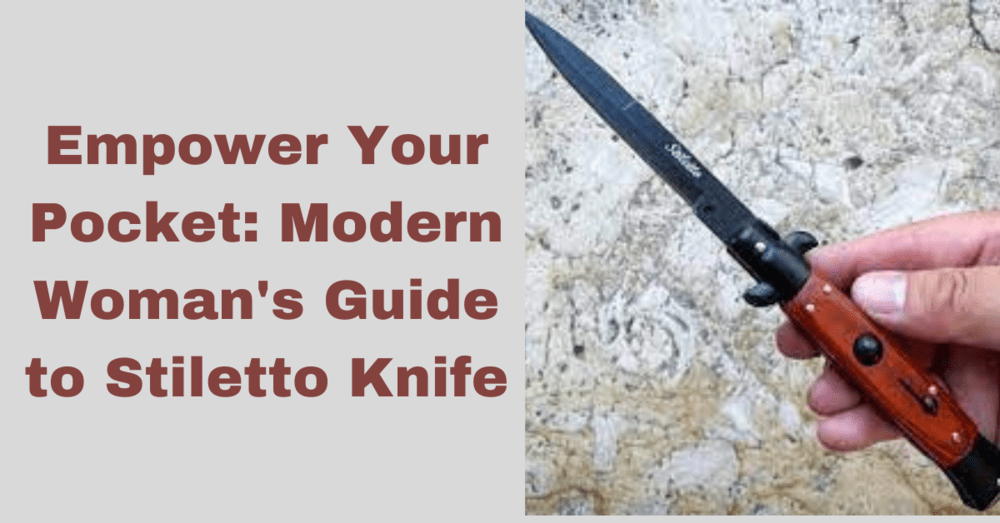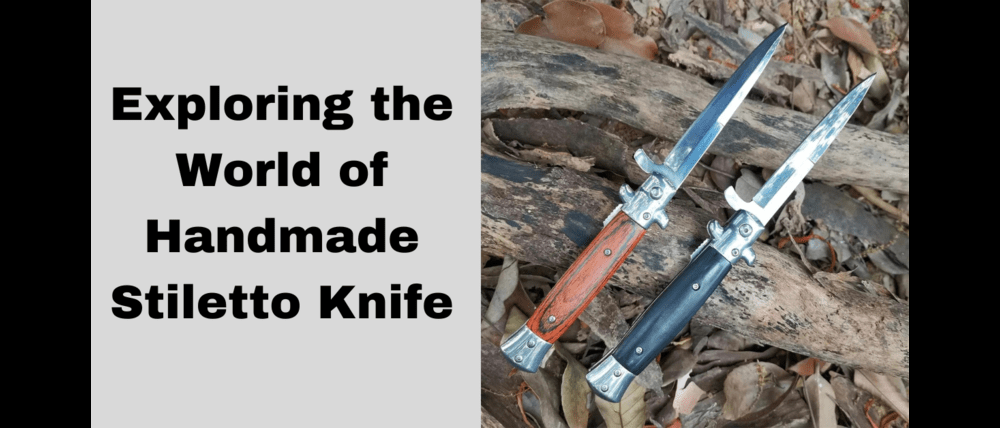Embarking on a captivating journey through the ages, we unveil the historical tapestry of the stiletto knife. From its ancient origins to modern-day adaptations, each era has left an indelible mark on this iconic blade, shaping its evolution and cultural significance.
Ancient Origins of Stiletto Knife
- Medieval Precision (14th Century):
The roots of the stiletto knife can be traced back to medieval Italy in the 14th century. Crafted for precision and subtlety, early stilettos were designed with a slim and tapered profile, ideal for discreet personal defense. This marked the beginning of the stiletto’s journey, emphasizing finesse and strategic use.
- Italian Ingenuity (15th Century):
As the 15th century unfolded, Italian artisans refined the stiletto’s design, incorporating intricate handles adorned with precious materials. Beyond a mere tool, the stiletto became a fashionable accessory, showcasing the marriage of style and lethal capability during the Renaissance period.
Renaissance Period of Stiletto Knives
- Renaissance Accessory (16th Century):
In the Renaissance, kitchen knives, including stiletto knives, experienced a resurgence in popularity, becoming fashionable accessories among the aristocracy. With a focus on refinement and sophistication, stilettos of this era were not only functional tools but also symbols of style and upper-class elegance.
- Artistry and Craftsmanship (17th Century):
Advancements in craftsmanship during the 17th century elevated the stiletto to a work of art. Handles featured ornate details, and blades showcased intricate engravings. This period solidified the stiletto’s dual role as a practical tool and a symbol of status and aesthetic refinement.
Stiletto Knives in Warfare
- Elite Military Adoption (20th Century):
The 20th century witnessed the stiletto knife finding its place in warfare. Elite military units, including the British Commandos during World War II, recognized its effectiveness in close-quarters combat. The stiletto’s slender design and sharp point made it an invaluable tool for the silent dispatching of adversaries in the theater of war.
- Tactical Prowess (21st Century):
In the modern era, the stiletto continues to serve in tactical roles. Advanced materials and manufacturing techniques have enhanced its functionality, and special forces around the world still appreciate the stiletto’s tactical prowess in various combat situations.
Stiletto Knives in Popular Culture
- Cinematic Symbolism (20th Century):
In the 20th century, stiletto knives became symbolic in popular culture, particularly in cinema. Characters like James Bond wielded stiletto-style knives, contributing to the blade’s association with intrigue and danger. Its portrayal in films and literature cemented the stiletto’s place in the collective imagination.
- Cultural Icons (21st Century):
In the 21st century, the stiletto knife continues to be an icon in popular culture. From music to fashion, the stiletto’s sleek and distinctive design often makes appearances in various art forms, showcasing its enduring influence.
Modern-Day Stiletto Knives
- Versatile Designs (Contemporary Era):
In contemporary times, the stiletto knife has evolved into a versatile tool with a diverse range of designs. Modern materials, innovative styles, and functionality have expanded the stiletto’s role from a historical artifact to a practical and collectible item.
- Everyday Carry (21st Century):
Modern stiletto knives cater to a broad audience, serving as everyday carry items for enthusiasts. Their sleek profiles, reliable mechanisms, and aesthetic appeal make them popular choices for those seeking a blend of style and utility.
Conclusion:
As our journey through time unfolds, the stiletto knife emerges not just as a historical artifact but as a dynamic symbol that has adapted to the evolving needs and tastes of each era. From ancient precision to modern versatility, the stiletto’s journey remains a testament to its enduring significance in the realm of edged weapons.



